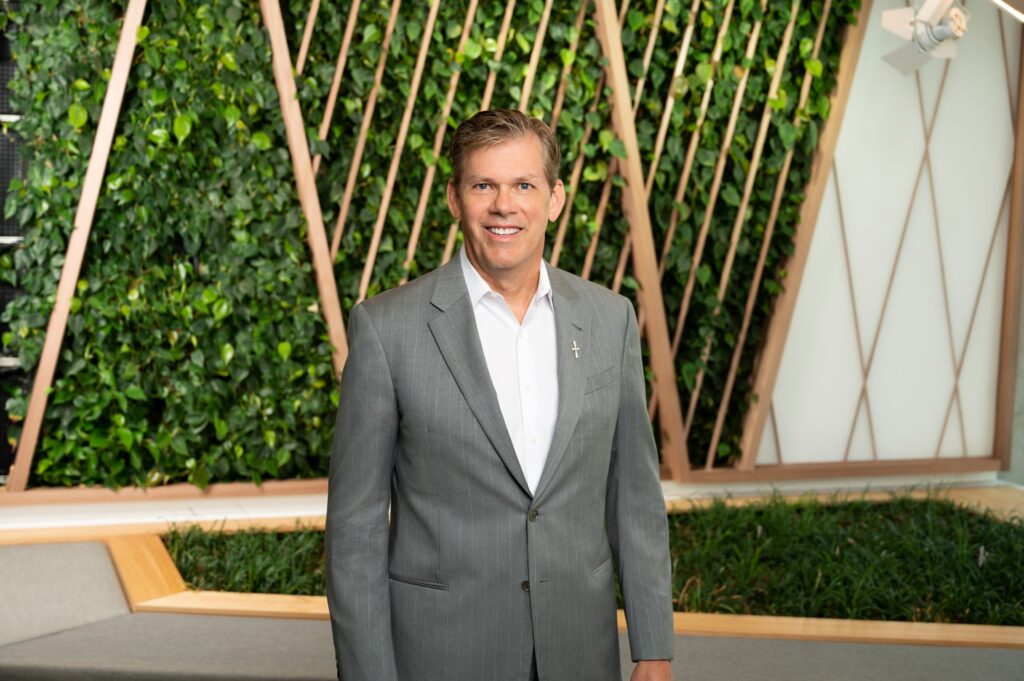Communication, Coordination, and Cooperation
- August 22, 2023

The do’s and don’ts of building teams that work.
It could be argued that the concept of team building is older than recorded history. That said, the first scientific process of defining the word “team” in an organizational context was documented in the late 1920s and early 1930s in what has become known as the Hawthorne studies. These studies looked at the way groups of workers behaved under various conditions. Ultimately, the researchers found that the groups formed a sense of identity and connectedness that came about through their interactions. This research inspired companies to form teams within their workforces.
Fast-forward to 1960, when Bruce Tuckman, a psychology researcher who studied group dynamics, took it a step further and defined a team-building model that included four distinct stages that were required for a team to grow into a productive unit: forming, storming, norming, and performing. Forming, as the name suggests, is the initial stage when a group of people is brought together for a purpose and the team structure is formed. The storming stage involved the surfacing of internal team conflicts as team members work through power, leadership, and structural issues. During the norming stage, the growing pains of storming begin to even out and the team begins to function more smoothly with shared leadership and task execution; they begin to build shared trust. Lastly the team is comfortable depending on each other to achieve goals during the performing stage. They are now operating at a highly productive level.
Between the 1960s and present day, companies have adapted various team-building techniques and built upon common concepts to create unique opportunities within their ranks for building community. In 2020, after the onset of the COVID-19 pandemic, team building morphed again as new challenges forced the concept to evolve.
Changes
The pandemic stretched leaders to be more agile, creative, and inclusive, in ways that weren’t necessary prior to 2020, and team building evolved as a result. Initially, leaders brought it back to basics.
“It was going back to basics of people first,” says Karen Leal, a performance specialist at Insperity, a human resources company based in Kingwood, Texas, northeast of Houston. “Some of the team building was a manifestation of trying to care for people. We would send them lunch, and we’d all have lunch together over Zoom. It was really about taking care of some fundamental needs.”
After acclimating to the new normal and the new workplace structures of in-office, hybrid, and remote teams, she adds, leaders have had to be flexible and creative with how they approach the changing dynamic. “Now, it’s not survival mode. Now, we can actually thrive a little bit. Those solutions look a little bit different, too.”
New team structures presented changes to how team building happens, and it’s also revealed some continuing apprehensions.
“You have some individuals who are still afraid to go among a big group of people. There’s still a fear factor coming out of the pandemic,” says Pamela Hooper, a 25-year HR veteran and a strategic advisor with vcfo, an Austin-based financial and HR firm. “Also, we have all kinds of places now where we can do virtual events that didn’t exist before. It wasn’t even an opportunity or a thought to do things like a sip-and-paint or a cooking thing together online. Today different organizations offer a variety of different resources and ideas for getting your team together virtually and having a fun team-building event. It’s similar to onsite events where you engage with an advisor who can help guide the process.”
For the newest members of the workforce, those who were in college or graduating during the pandemic, their introduction to the workplace and teams has looked quite different, and HR teams have had to take that into consideration.
“For those of us who might have had interactions and that face-to-face relationship prior to [the pandemic], sometimes we forget that others may have never had that coming out of school,” Leal says. “Their experience has always been this insulated virtual experience. This is a whole new terrain for them.”
Within team-building efforts, she says, understanding those experiential differences and supporting those individuals is important. “Part of what all of this helps us do is try to be more understanding and sensitive that everybody’s going through their thing,” Leal adds. “Everybody has their whole life dynamic that’s running in the background. Now more than ever, there’s some empathy toward that and sensitivity that helps us not expect everybody to fit within the same mold.”
An Old—and New—Issue
One of the bigger issues both Hooper and Leal see for team building in the post-pandemic workplace isn’t a new issue, but it’s got new layers: communication.
“Communication is an important part of all things team. Having a communication strategy around everything you do, including team building, sets clear expectations for why you want to do it as an organization,” Leal says. “Sometimes I see that missed by leaders. They see something about team building, they think it’s a good idea, and then they implement, but they miss an opportunity to say, ‘Our culture here and how we treat each other is really a priority, and we want to make sure that everybody has access to each other and knows that building relationships outside of your normal work duties is something we value around here.’ ”
Another new layer to communications is the use of platforms like Slack or Teams to message coworkers. It blurs the lines between professional conversations and social interactions, Hooper says. Chatting on these tools makes it feel more social and casual. Prior to the broad adoption of these types of services, and their acceleration during the pandemic, formal emails were more the norm.
“Communication isn’t a new issue, but how we communicate in the different types of mediums is a new issue,” Hooper says. “We have all of these different resources and ways to communicate, and with that comes workplace issues, whether it’s the tone of a chat that comes through or the consideration of time. Just because you’re working at 2:00 a.m. doesn’t mean other people are.”
The Why
Setting up and implementing a team-building strategy means more than scheduling a happy hour. Instead, the strategy should center on a specific goal. Clearly defining expectations and understanding why a team needs to build up relationships is critical to success.
“Having a specific meaning behind your team building is really important, so you’re not just jumping on the bandwagon,” Hooper says. “If you do it just because everyone else is, you’re really going to lose the point of it, and your employees aren’t going to appreciate it as much.”
“I always ask why,” Leal says. “Based on that answer, then we can move forward.” At times there is a desire to do team-building activities because everyone else seems to be doing them, she says, echoing Hooper, but that’s not a good reason. At other times, she finds there may be underlying issues, and a manager feels like he or she needs to do something intentional to bring the team together.
However, Leal cautions against using team-building activities to fix a dysfunctional team dynamic. “There’s a time and a place for team building: when you already have a well-functioning team or you have a brand new team that you’re trying to make sure has exposure to each other beyond just work transactions.”
But she recommends working on interpersonal difficulties separately, before trying to bring people together in a group activity. “Once we can really address the true issues, the underlying issues, then I think team building can help those relationships repair and move forward in a productive way.”
Ultimately, team building is about building better working relationships between teammates and between employees who may not otherwise interact. Through team-building interactions, employees can learn what their peers’ strengths are, strengths they might not otherwise see under normal work conditions.
Trust is another important “why” developed through the team building process and is reflected in Tuckman’s norming stage of team development.
“When I think of team building, I think of those outdoor courses or the trust fall, and for sure your employees do have to trust the people they’re engaging with. They create their own little groups in their departments because they talk to them on a daily basis,” Hooper says. “They’ve established this little bit of trust where they feel like they’re comfortable. How do you establish that trust from the beginning of a team-building event when you have different departments and different individuals? Especially on executive teams, spearheading multiple organizations, or something of that sort, you really have to start the day off with figuring out how to take down those titles and those barriers and allow individuals to have open communication.”
Best Practices
Team-building best practices depend on some primary factors, according to Leal. One of them is timing.
Timing affects the collective attitude, Hooper says. Attitudes won’t be great toward team building if those events land during a departmental deadline for some. Holding an event when a sales team is trying to make quota or when an accounting team is trying to close the books at the first of the month is bad timing.
“Usually, the person who is helping build out the team-building [activity], whether it’s the sponsored event planner or the HR department, they don’t always work directly in the department,” Hooper says, “so it’s important to keep that in mind.”
Likewise, don’t hold a required event at 8:00 a.m. or 5:00 p.m. “Usually that flows into their work-life balance and then they feel like they have to be there,” Hooper adds, “and if they can’t be there, then there’s anxiety created before the event even takes place.”
Also bring employees into the process of deciding what the activity will be. Getting the team involved in planning activities will build anticipation and engagement.
“Is there a committee that you can create, the Fun Committee maybe?” Hooper asks. “Call it whatever you want, but get some insight from your employees on what they want. Really collaborate with the team in general, and say, ‘Hey, here’s some of the ideas that came out of the Fun Committee. What could we put in place?’
“If you can rally a few good employees behind it, they’re going to rally the team,” she says.
The Where
While most team-building activities are capable of building important relationships, the actual activity can run the gamut from onsite to offsite, from casual socializing to structured learning, from in-person to the newest normal, a virtual location. All of these provide different types of opportunities for growth.
“Each serves a different purpose,” Hooper says. “Once you take an employee offsite, whether it’s for team building or just a one-on-one conversation, getting them out of the office really opens the doors up. It allows for more communication.”
Offsite doesn’t mean pricey venues, though. If you’re doing something in the office, then figure out how a section of it can be taken outside, she says. You could start your day having coffee outside or in the lobby. If you are doing a collaborative activity, find a green field or place directly around the office to have the employees get in groups and go outside to collaborate.
While they are convenient, all-day onsite team-building conferences can be tiring. “If you break it up and bring people outside of the building for 15 minutes at a time, you’re going to get a lot more engagement than you would from keeping them in that same conference room all day long,” Hooper says. “It does open the door for good communication because you’re going outside of their normal space, whatever that is.”
For those working remotely, Leal says, a virtual connection is better than no connection at all.
“At the end of the day, nothing can replace that human-to-human interaction and contact that we value,” she says. “When we are in the same space, there is something to that; there is the opportunity for some type of magic to happen. It doesn’t always, and that’s why you have to know your team.”






